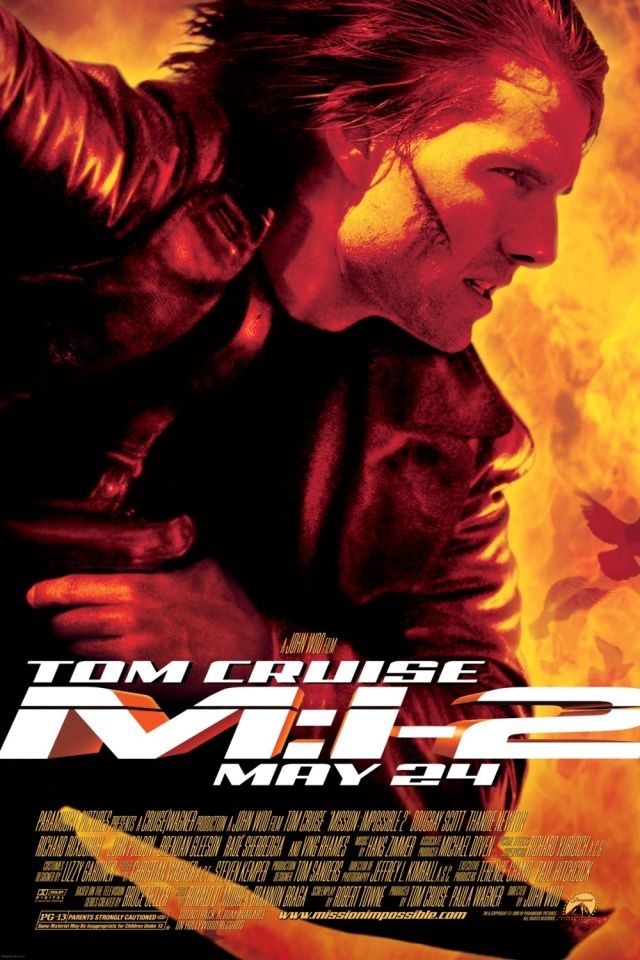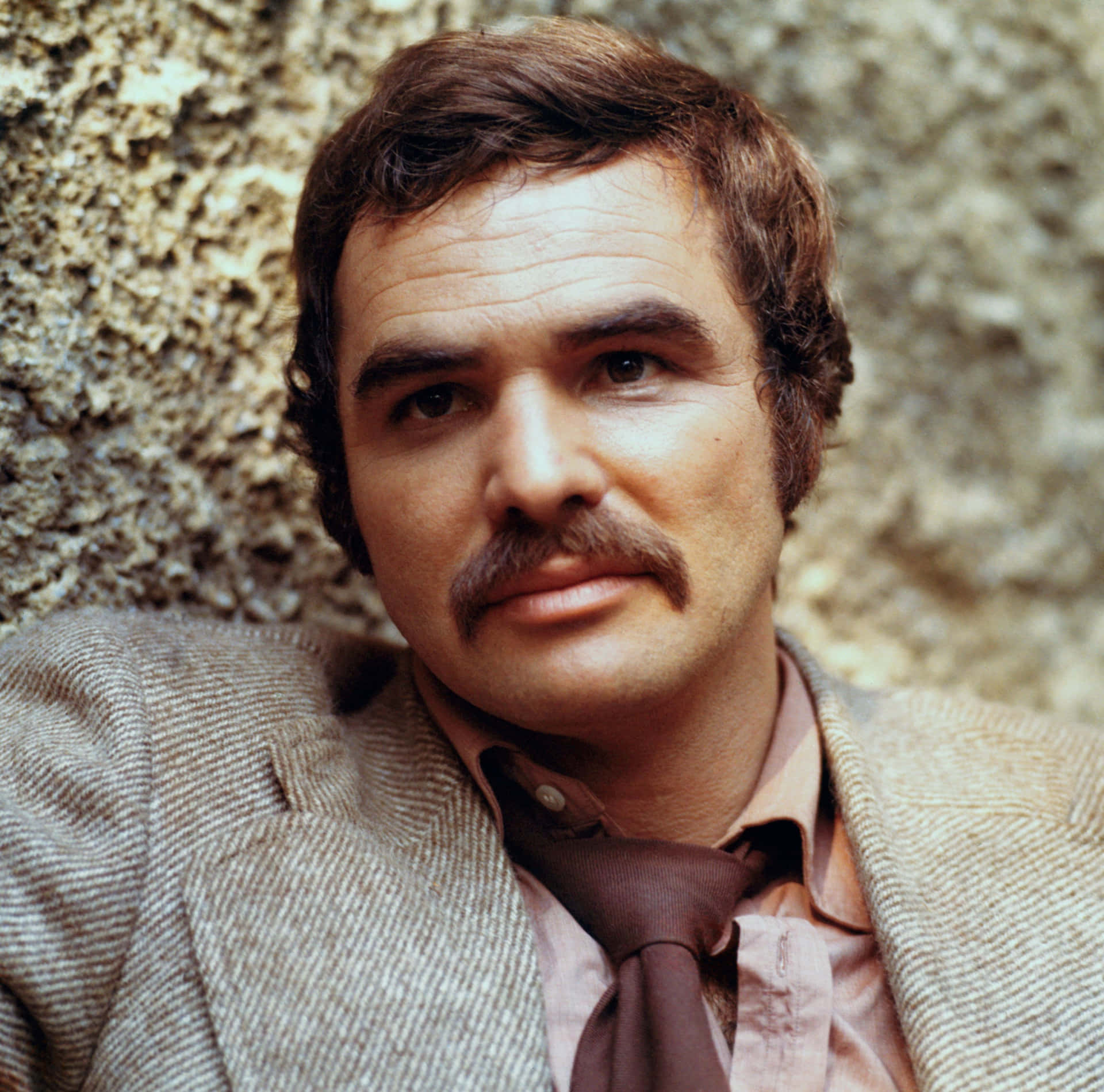
Burt Reynolds was more than just a Hollywood icon; he was an embodiment of charisma, a symbol of an era, and a public figure whose life, even in its post-mortem arrangements, continued to prompt inquiry. His passing in 2018 marked the end of a remarkable journey, yet the discussions surrounding his final resting place have underscored a deeper truth: Reynolds lived a life as complex and multifaceted as any narrative he graced on screen. It was a life punctuated by dramatic highs and lows, profound personal struggles, and an enduring public persona that often overshadowed the man beneath the legend.
To fully grasp the scope of his impact, and indeed, to understand why even the most intimate details of his life could become subjects of prolonged public interest, one must traverse the intricate tapestry of his existence. From his unexpected pivot from a promising athletic career to the dazzling, yet often challenging, world of acting, Reynolds’ path was anything but linear. He navigated the treacherous currents of fame with a unique blend of self-deprecating humor and undeniable magnetism, leaving an indelible mark on cinematic history and the collective cultural consciousness.
This in-depth exploration aims to peel back the layers of Burt Reynolds’ storied career and personal evolution. We will embark on a journey through the pivotal moments that shaped his character, illuminated his genius, and, at times, contributed to the complexities that would follow him throughout his life and beyond. By examining the key chapters of his early life, his ascent to stardom, and the challenges he confronted, we can begin to appreciate the profound legacy of a man whose life was as captivating as any performance he delivered.
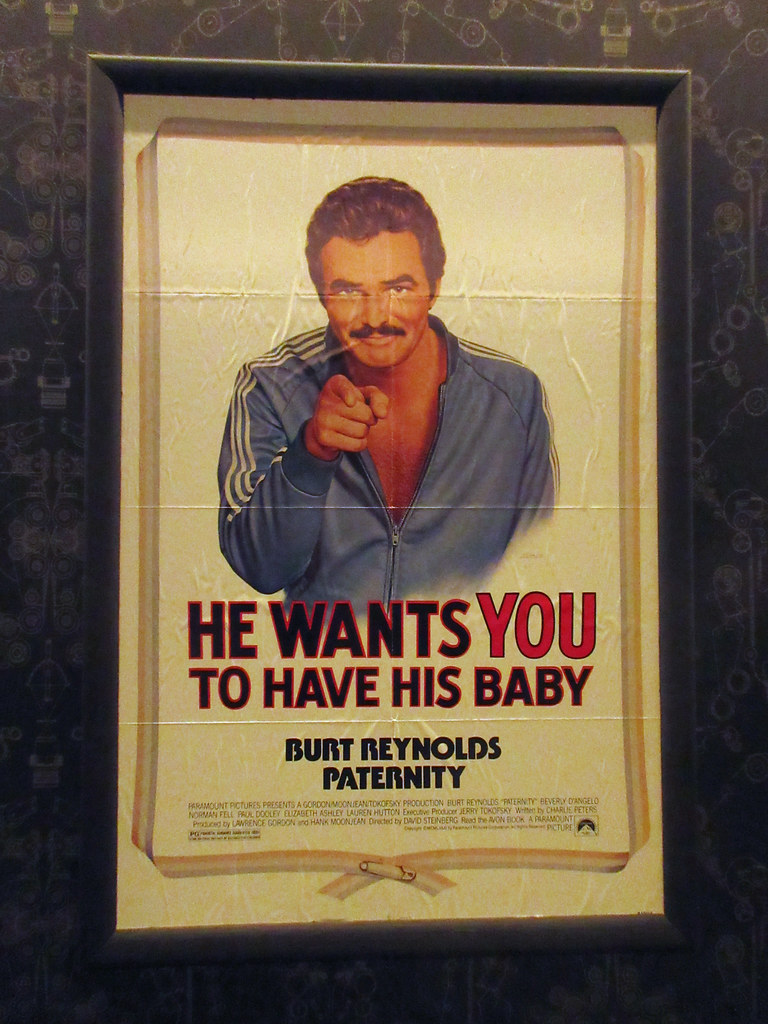
1. **Early Life and Athletic Dreams**Burton Leon Reynolds Jr. was born on February 11, 1936, into a family with diverse ancestral roots, including Dutch, English, Scots-Irish, and Scottish lineage, with Reynolds himself claiming some Cherokee and Italian ancestry. His birthplace, often cited as Waycross, Georgia, was later clarified by Reynolds in 2015 to be Lansing, Michigan, a detail he mentioned in his autobiography as where his family resided when his father was drafted into the United States Army.
His early years were marked by frequent relocations, following his father’s military career. The family lived in Fort Leonard Wood, Missouri, for two years before moving to Lake City, Michigan, his mother’s childhood home, when his father was sent to Europe. In 1946, the Reynolds family settled in Riviera Beach, Florida, a place where young Reynolds, nicknamed “Buddy,” began a lifelong friendship with Dick Howser in sixth grade. His father would eventually rise to become the chief of police of Riviera Beach, firmly rooting Burt’s formative years in the Sunshine State.
At Palm Beach High School, Reynolds emerged as a formidable athlete, excelling in both football and track. His prowess on the gridiron earned him recognition as a first-team All-State fullback in 1953 and an honorable-mention selection to the 34th annual All-Southern team. These achievements led to college football scholarship offers, initially from the University of Miami, but he ultimately chose to play for head coach Tom Nugent at Florida State University.
His freshman season at Florida State in 1954 showed early promise; he secured a starting position at right halfback and even tallied a one-yard touchdown in a victory against the University of Louisville. Despite suffering a separated shoulder mid-season, Reynolds finished with impressive stats, including 134 rushing yards and two touchdowns. However, his athletic trajectory was irrevocably altered in 1955 when he sustained torn cartilage in his right knee during preseason workouts. After testing the injured knee, he realized he could no longer perform at the same level and left school, telling The Palm Beach Post, “I knew then I was finished as a football player.” A subsequent knee operation offered a glimmer of hope for a return the following year.
Tragically, just two months after his knee surgery, the 19-year-old Reynolds was critically injured in a severe automobile accident on State Road A1A, suffering internal injuries, including a ruptured spleen, after colliding with a stalled truck. The driver fled the scene, and his vehicle was totaled, with Reynolds recounting the loss of a prized wristwatch from the 1955 Sun Bowl game in the crash. This devastating incident effectively brought his promising football career to a definitive end, closing a significant chapter of his early life defined by athletic ambition and unexpected adversity, eventually leading him back to the Florida State campus almost two years later, where lingering injuries finally convinced him to quit football for good. During this period, he even became engaged to Jean Hayden, a former beauty queen, though they never wed.
Read more about: From Austrian Oak to Global Statesman: An In-Depth Chronicle of Arnold Schwarzenegger’s Enduring Legacy

2. **The Pivotal Shift to Acting**The cessation of his football dreams opened an entirely unforeseen door for Burt Reynolds during his spring term at Palm Beach Junior College in 1956. Fate intervened in an English class taught by Watson B. Duncan III, a man Reynolds would later describe as his mentor and the most influential person in his life. Duncan, upon hearing Reynolds read Shakespeare in class, encouraged him to audition for a school play he was directing, *Outward Bound*. Despite having no prior acting experience, Reynolds was cast in a main role, a testament to his nascent talent.
His performance in *Outward Bound* earned him a best actor award at the 1956 PBJC Drama Awards, a surprising triumph for the former athlete. Reynolds famously quipped, “I read two words and they gave me a lead.” This unexpected accolade came with a scholarship to the Hyde Park Playhouse, a summer stock theater in Hyde Park, New York. At this point, acting was merely an “agreeable alternative” to physically demanding summer jobs, not yet a serious career consideration.
It was during his time at the Hyde Park Playhouse that Reynolds had a fortuitous encounter with Joanne Woodward, who became instrumental in helping him secure an agent. Woodward, who admitted she didn’t recall seeing him perform much, remembered him as a “cute, shy, attractive boy” with a personality that inspired others to assist him. This connection soon led him to New York City, where he was cast in *Tea and Sympathy* at the Neighborhood Playhouse, marking his first foray into professional theater.
His Broadway debut in *Look, We’ve Come Through* garnered favorable reviews, and he subsequently went on tour with the cast, notably driving the bus in addition to performing on stage. Upon returning to New York, Reynolds, despite having already worked professionally for two years, finally enrolled in acting classes at the Neighborhood Playhouse with Wynn Handman. He studied alongside other notable figures like Frank Gifford, Carol Lawrence, Red Buttons, and Jan Murray, honing his craft and immersing himself in the techniques of “truth, moment-to-moment, how to listen, improv.”
A moment of self-doubt arose after a botched improvisation in class, causing Reynolds to briefly consider returning to Florida. However, in December 1956, he landed a supporting role in a revival of *Mister Roberts* at the New York City Center, sharing the stage with Charlton Heston and Orson Bean. This brief but significant experience was followed by director John Forsythe arranging a movie audition with Joshua Logan for *Sayonara* (1957). Though he didn’t get the part, being told he looked “too much like Marlon Brando” became a recurring theme, and Logan advised him to go to Hollywood, despite Reynolds’ lack of confidence. This early struggle with identity and comparison would define much of his initial efforts to break into the film industry, setting the stage for the challenges to come.
Read more about: Oscar Season 2025: Unpacking the Snubs That Sparked Outrage and Redefined Hollywood’s Awards Narrative
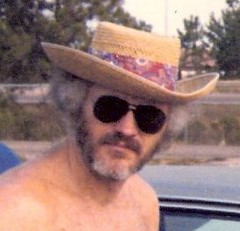
3. **Struggles in Early Hollywood**Reynolds’ arrival in Hollywood was far from glamorous, a stark contrast to the stardom he would later achieve. To make ends meet, he took on a string of diverse, often physically demanding, jobs. He worked as a waiter, washed dishes, drove a delivery truck, and even served as a bouncer at the notorious Roseland Ballroom. These were lean years, characterized by a persistent grind to survive in a city that seemed indifferent to his aspirations. He once wrote about being offered $150 to jump through a glass window on a live television show while working as a dockworker, illustrating the desperate measures of a struggling actor.
His initial foray into television during the late 1950s involved a series of guest roles on shows such as *Flight*, *M Squad*, *Schlitz Playhouse*, *The Lawless Years*, and *Pony Express*. Despite these appearances, a significant breakthrough remained elusive. However, his striking presence caught the eye of studio executive Lew Wasserman, leading to a seven-year contract with Universal Studios. Wasserman reportedly remarked, “I don’t care whether he can act or not. Anyone who has this effect on women deserves a break,” highlighting Reynolds’ undeniable, inherent appeal even in his earliest days.
Reynolds’ first substantial opportunity came with a main role alongside Darren McGavin in the television series *Riverboat* (1959–61), where he played Ben Frazer, the boat’s pilot. Contemporary reports continued to draw comparisons, noting Reynolds was considered “a double for Marlon Brando.” Although the show ran for two seasons, Reynolds famously quit after just 20 episodes, citing irreconcilable differences with McGavin and the executive producer, and expressing dissatisfaction with what he called “a stupid part.” This abrupt departure, however, had immediate repercussions for his career.
As Reynolds later recalled, quitting a network television series left him with a tarnished reputation. “I couldn’t get a job. I didn’t have a very good reputation. You just don’t walk out on a network television series.” He found himself relegated to guest-starring roles, often playing “heavies in every series in town,” including episodes of *Playhouse 90*, *Alfred Hitchcock Presents*, and *The Twilight Zone*. He candidly described this period as “depressing years,” a time of relentless struggle and typecasting that seemed to offer little creative fulfillment.
Compounding his television struggles, Reynolds also ventured into low-budget film projects like *Angel Baby* (1961) and the war film *Armored Command* (1961), which he humorously dismissed as “the one picture that Howard Keel didn’t sing on. That was a terrible mistake.” He also returned to Broadway briefly in 1961 for *Look, We’ve Come Through*, but it lasted only five performances. These experiences collectively underscore the arduous and often unrewarding path Reynolds navigated in his early attempts to establish himself in Hollywood, battling both professional setbacks and the persistent shadow of Marlon Brando, which ironically both opened and closed doors for him.
Read more about: Beyond the Headlines: Unpacking the Most Shocking Public Meltdowns That Forced A-List Celebrities to Take a Hiatus

4. **Breakthrough with *Gunsmoke* and Talk Show Charisma**The trajectory of Burt Reynolds’ career experienced a significant upward shift in 1962, a turning point facilitated by Dennis Weaver’s desire to leave *Gunsmoke*, one of the top-rated shows in the nation. Producers seized the opportunity to introduce a new character, Quint Asper, a “half-breed” blacksmith, and Reynolds was selected for the role from an impressive pool of 300 contenders. This casting proved to be a pivotal moment, offering him a stable and prominent platform in a beloved series.
Reynolds expressed a commitment to the show, announcing he would stay “until it ends,” and reflecting later, he deemed it “the happiest period of my life.” He acknowledged that being on *Gunsmoke* allowed him to “serve my apprenticeship,” gaining invaluable experience and exposure. However, by 1965, he felt the need to move on, explaining that “there wasn’t room for two leading men” on the show, signaling his growing ambition for more central and challenging roles, even if it meant leaving a comfortable and successful position.
Following his departure from *Gunsmoke*, Reynolds sought lead roles in film, starring in the low-budget action movie *Operation C.I.A.* (1965) and playing Native American characters in films like *Navajo Joe* (1966) and the TV series *Hawk* (1966–67), which ran for 17 episodes. He also made a pilot for *Lassiter*. However, he later expressed his dissatisfaction with some of these roles, particularly *Navajo Joe*, stating, “It wasn’t my favorite picture” and that he “had two expressions—mad and madder,” indicating a struggle against typecasting and a desire for more nuanced characters.
Throughout the late 1960s, Reynolds endured a series of less-than-successful film projects, including *Shark!* (1969), *Impasse* (1969), and *100 Rifles* (1969), which he described as spending “the entire time refereeing fights between Jim Brown and Raquel Welch.” He found some artistic satisfaction in *Sam Whiskey* (1969), which he called “way ahead of its time” for its light comedy, but noted, “nobody cared.” In 1969, Reynolds articulated his frustration, expressing a desire for roles with more depth, like John Garfield’s part in *The Postman Always Rings Twice*, but felt producers consistently offered him unpromising scripts, telling him, “‘I know it’s not there now kid, but I know we can make it work.'”
The true turning point in his public image, however, arrived not through film, but through his charismatic appearances on talk shows. Beginning with *The Merv Griffin Show*, Reynolds quickly became a sensation, employing self-deprecating humor and calling himself “America’s most ‘well-known unknown'” who made movies “they show in airplanes or prisons or anywhere else the people can’t get out.” This authenticity and wit resonated enormously with audiences, leading to frequent invitations from Griffin and Johnny Carson, and even guest-hosting *The Tonight Show*. This newfound popularity transformed his career “drastically overnight,” as he gained a “personality” and realized that “people liked me, that I was enough,” deciding to transfer this “irreverent, self-deprecating side” to the screen for a “big career.”
Read more about: Burt Reynolds, Enduring Icon of Film and Television, Dies at 82, Leaving a Legacy of Charisma and Depth
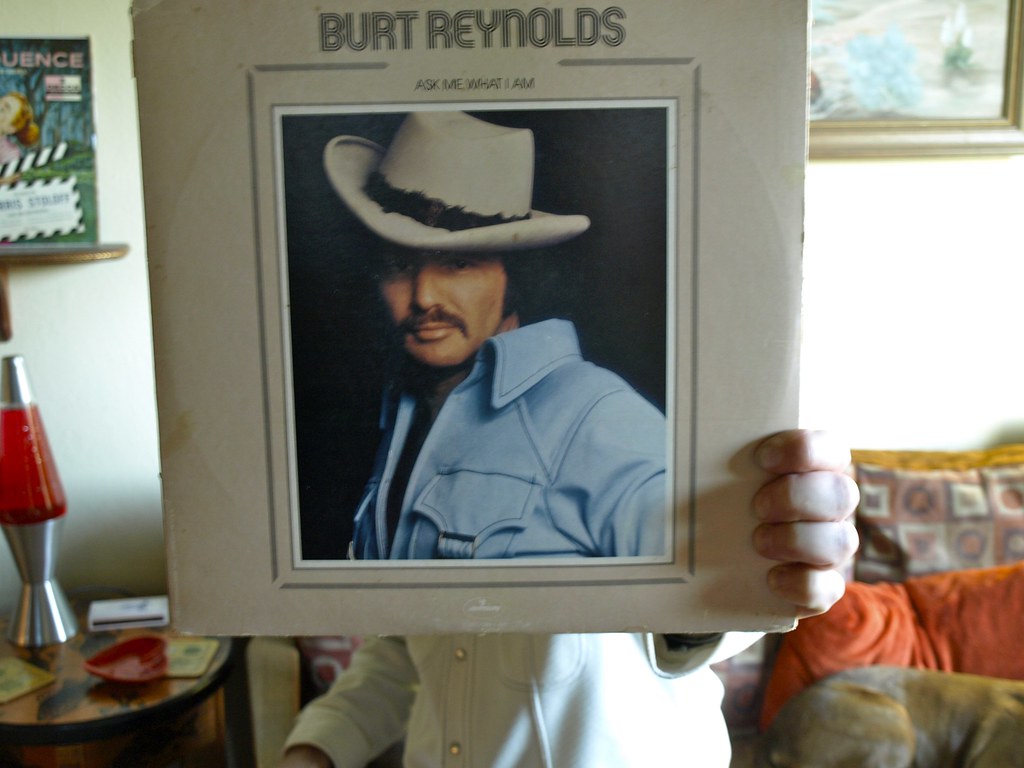
5. **The *Deliverance* Moment and Public Image**Burt Reynolds’ career reached an unprecedented level of critical acclaim and commercial success with the release of John Boorman’s harrowing film *Deliverance*. Boorman, remarkably, cast Reynolds based on one of his captivating talk-show appearances, recognizing a depth that went beyond the conventional action roles. Reynolds himself, with characteristic humor, joked about the script not having “Paul Newman and Robert Redford’s fingerprints all over it,” acknowledging the rarity of being the first choice for such a prestigious project.
Reflecting on this pivotal role in 1972, Reynolds confessed, “I’ve waited 15 years to do a really good movie. I made so many bad pictures. I was never able to turn anyone down. The greatest curse in Hollywood is to be a well-known unknown.” *Deliverance* proved to be both a commercial triumph and a critical darling, solidifying Reynolds’ status as a major movie actor. The film’s impact was so profound that, as Reynolds later recounted, “The night of the Academy Awards, I counted a half-dozen Burt Reynolds jokes. I had become a household name, the most talked-about star at the award show.”
Concurrent with the release of *Deliverance*, Reynolds garnered widespread notoriety through two other highly publicized aspects of his personal life. He embarked on a well-publicized relationship with Dinah Shore, an actress and singer 20 years his senior, which captivated the tabloids. Even more sensationally, he posed for a fold-out centerfold in the April 1972 issue of *Cosmopolitan* magazine, an audacious move that further cemented his image as a daring and unconventional symbol, igniting widespread conversation and controversy.
Reynolds offered several candid reasons for his decision to pose for *Cosmopolitan*. He stated it was done “for a kick,” attributing it to his “strange sense of humor,” and strategically timed it knowing that *Deliverance* was about to be released, undoubtedly amplifying his public profile. However, this decision would later become a source of regret for him, highlighting the complex interplay between public persona and private repercussions that often defined his celebrity.
In the immediate aftermath of this whirlwind period, Reynolds quickly followed up *Deliverance* with other projects, including *Fuzz* (1972), where he reunited with Raquel Welch, and a memorable cameo in Woody Allen’s comedic film *Everything You Always Wanted to Know About Sex* (*But Were Afraid to Ask*) (1972). He also briefly returned to the stage, appearing in *The Rainmaker* at the Arlington. This period of intense public scrutiny and career acceleration marked a definitive shift, establishing Reynolds as a magnetic, albeit sometimes controversial, figure at the very center of Hollywood’s spotlight.
Read more about: Burt Reynolds, Enduring Icon of Film and Television, Dies at 82, Leaving a Legacy of Charisma and Depth
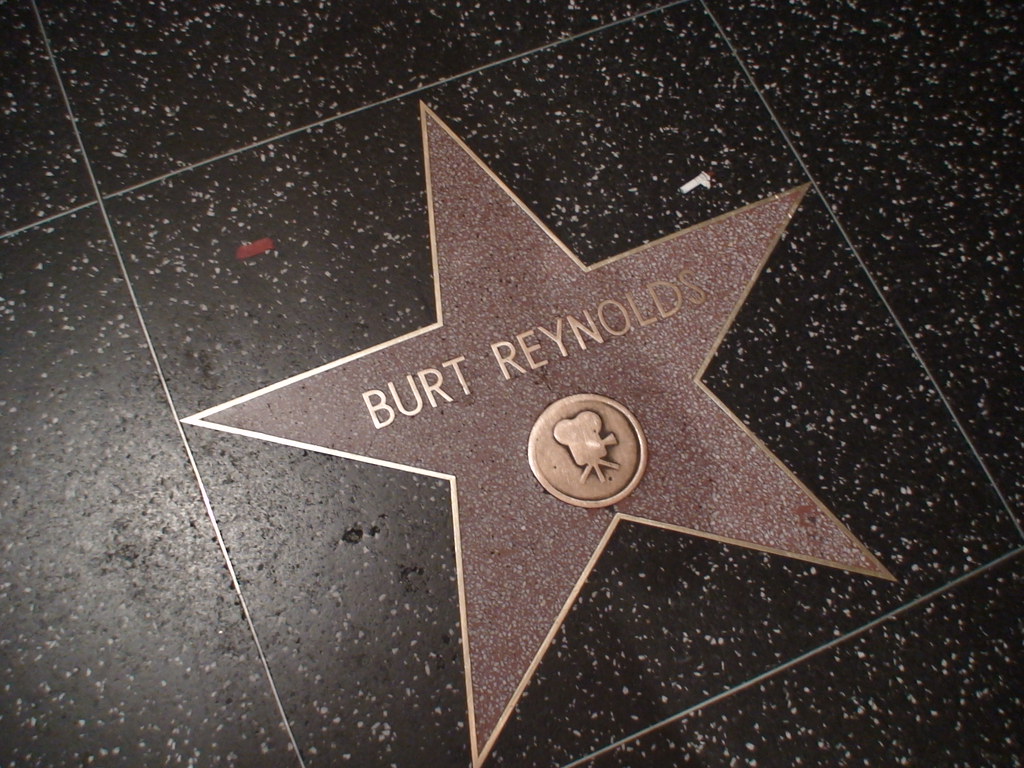
6. **Reign as Box-Office King**The mid-1970s ushered in a transformative era for Burt Reynolds, cementing his status as one of Hollywood’s most bankable stars. A significant turning point arrived with the light-hearted car-chase film *White Lightning* (1973), written by William W. Norton. Reynolds later retrospectively identified this film as “the beginning of a whole series of films made in the South, about the South, and for the South.” He recognized the immense regional appeal, noting, “you could make back the cost of the negative just in Memphis alone. Anything outside of that was just gravy,” underscoring the lucrative nature of the burgeoning car-chase genre that would become his most profitable niche.
His meteoric rise in popularity was quickly quantifiable. By the end of 1973, Reynolds had ascended to number four on the list of the 10 most-popular movie actors in the U.S., a position he would impressively maintain until 1984. This consistent presence at the top of the box-office charts solidified his reign as a genuine superstar, making him a household name and a reliable draw for audiences across the country, captivating viewers with his blend of action, humor, and undeniable charm.
Reynolds further solidified his box-office dominance through strategic collaborations and a keen understanding of his audience. He teamed up with acclaimed director Robert Aldrich for the popular sports comedy *The Longest Yard* (1974), a film that showcased his athletic past and his ability to carry a major production. Aldrich, while acknowledging Reynolds’ appeal, offered an insightful observation about his acting range, stating, “I think that on occasion, he’s a much better actor than he’s given credit for. Not always; sometimes he acts like a caricature of himself,” a comment that foreshadowed future discussions about Reynolds’ persona.
While he experienced less success with big-budget fiascos like Peter Bogdanovich’s musical *At Long Last Love* (1975) and *Lucky Lady* (1975) with Gene Hackman and Liza Minnelli, Reynolds found continued commercial appeal in his signature light-hearted car-chase films, such as *W.W. and the Dixie Dancekings* (1975), and another police drama with Aldrich, *Hustle* (1975). He even made a cameo appearance in Mel Brooks’s *Silent Movie* (1976), demonstrating his versatility and willingness to engage with different cinematic styles, albeit often in a supporting capacity.
Beyond his acting roles, Reynolds ventured into directing, making his debut in 1976 with *Gator*, the sequel to *White Lightning*, also written by Norton. This creative shift proved profoundly satisfying for him. After filming, he declared, “I waited 20 years to do it [directing] and I enjoyed it more than anything I’ve ever done in this business. And I happen to think it’s what I do best.” This newfound passion for directing marked a significant personal and professional evolution, indicating a desire for more creative control and a broadening of his artistic endeavors, even as he famously declined roles that would become iconic, such as Han Solo in *Star Wars* and Clark Gable in *Gable and Lombard*, decisions he later expressed regret over.”
Read more about: Beyond the Hammer: An Insider’s Look at Chris Hemsworth’s Journey to Global Stardom
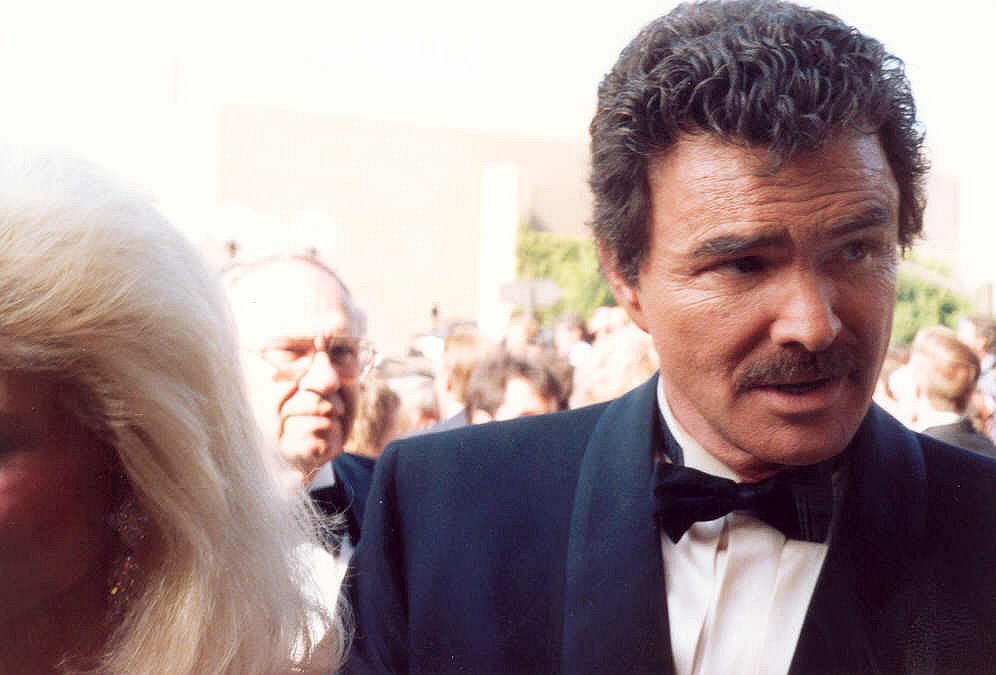
7. **Continued Directorial Ambitions and the *Smokey and the Bandit* Phenomenon**The mid-1970s marked a significant evolution in Burt Reynolds’ career, as he ventured beyond acting to embrace the director’s chair. His directorial debut came in 1976 with *Gator*, a sequel to his earlier success *White Lightning*, penned by William W. Norton. This creative shift proved profoundly satisfying for Reynolds, who, after filming, declared, “I waited 20 years to do it [directing] and I enjoyed it more than anything I’ve ever done in this business. And I happen to think it’s what I do best,” signaling a desire for greater artistic control and a broadening of his professional endeavors.
While this new passion took root, Reynolds simultaneously hit his commercial zenith with *Smokey and the Bandit* (1977). Directed by his friend and long-time stuntman Hal Needham, the car-chase film, co-starring Jackie Gleason, Jerry Reed, and Sally Field, became the biggest success of his career, igniting a six-year reign as the world’s number-one movie actor from 1978 to 1982. This phenomenon underscored his unique connection with audiences, particularly those who embraced his brand of charming, action-packed Southern-flavored cinema.
Throughout this period of immense popularity, Reynolds remained remarkably prolific, directing his second film, *The End* (1978), a dark comedy, and the popular stuntman tribute *Hooper* (1978), also with Needham and Field. He reflected on his craft, noting, “My ability as an actor gets a little better every time. I’m very prolific in the amount of films I make—two-and-a-half or three a year—and when I look at any picture I do now compared to Deliverance, it’s miles above what I was doing then. But when you’re doing films that are somewhat similar to each other, as I’ve been doing, people take it for granted.” His preference for directing over acting became increasingly apparent, with him stating, “I’d rather direct than act. I’d rather do that than anything. It’s the second-best sensation I’ve ever had.”
His golden touch extended to other box-office hits like the football comedy *Semi-Tough* (1977), the romantic comedy *Starting Over* (1979), *Smokey and the Bandit II* (1980), *The Cannonball Run* (1981), and the action film *Sharky’s Machine* (1981), which he also directed. Further successes included the musical *The Best Little Whorehouse in Texas* (1982) and *Best Friends* (1982) with Goldie Hawn. By 1982, Reynolds had cemented his position as the most popular actor in the U.S. for an astonishing fifth consecutive year, a testament to his ability to consistently deliver entertainment that resonated with a vast and loyal audience. He understood this connection, stating, “The only thing I really enjoy is this business, and I think my audience knows that… I guess it is because they always know that I give it 100 percent, and good or bad, there’s going to be quite a lot of me in that picture. That’s what they’re looking for.”
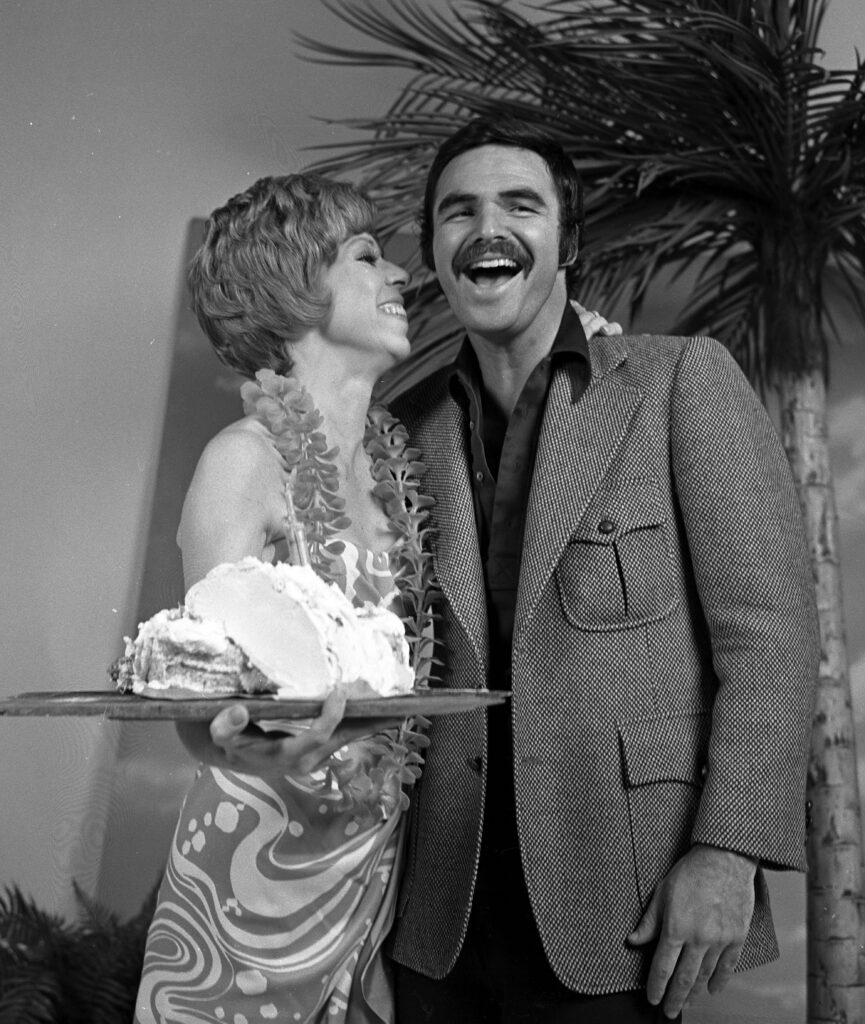
8. **The Shifting Tides: From King to Crisis, and the *Terms of Endearment* Regret**Despite his seemingly unshakeable reign at the box office, a pivotal decision in the early 1980s would dramatically alter the trajectory of Burt Reynolds’ career, leading to a period of professional re-evaluation and public scrutiny. At the height of his fame, he was offered the role of Garrett Breedlove in James L. Brooks’ *Terms of Endearment* (1983), a part specifically written with him in mind. This was an opportunity for a serious, acclaimed performance, a stark contrast to his popular car-chase comedies.
However, in a move he would famously and profoundly regret, Reynolds declined the role. His loyalty to his friend and frequent collaborator, director Hal Needham, led him to opt instead for another Needham-directed car-chase comedy, *Stroker Ace* (1983). The decision was a professional misstep of significant proportions, especially when Jack Nicholson took the *Terms of Endearment* role and went on to win an Academy Award for Best Supporting Actor, receiving widespread critical praise that Reynolds had long sought.
Looking back in 1987, Reynolds openly admitted the mistake, stating, “I felt I owed Hal more than I owed Jim,” referring to Jim Brooks. He confessed, “I regret that one most of all because it was a real acting part…. I wish I would have done it, and thinking back now, it was really a stupid decision, but I made a lot of stupid decisions in that period. It must have been my stupid period.” This candid reflection highlighted a burgeoning self-awareness of the choices that were beginning to impact his once-unassailable career.
The failure of *Stroker Ace* had immediate and tangible repercussions. An unnamed producer in 1983 cautioned that while Reynolds’s salaries wouldn’t immediately decrease, “if two or three more such pictures don’t work, people will just stop putting him in that kind of movie and that’s the kind of film for which he gets paid the most.” Reynolds himself would later articulate the profound impact of this period, lamenting, “That’s where I lost them,” referring to his once-devoted fanbase. It marked a definitive turning point from which his career, as he knew it, never fully recovered.
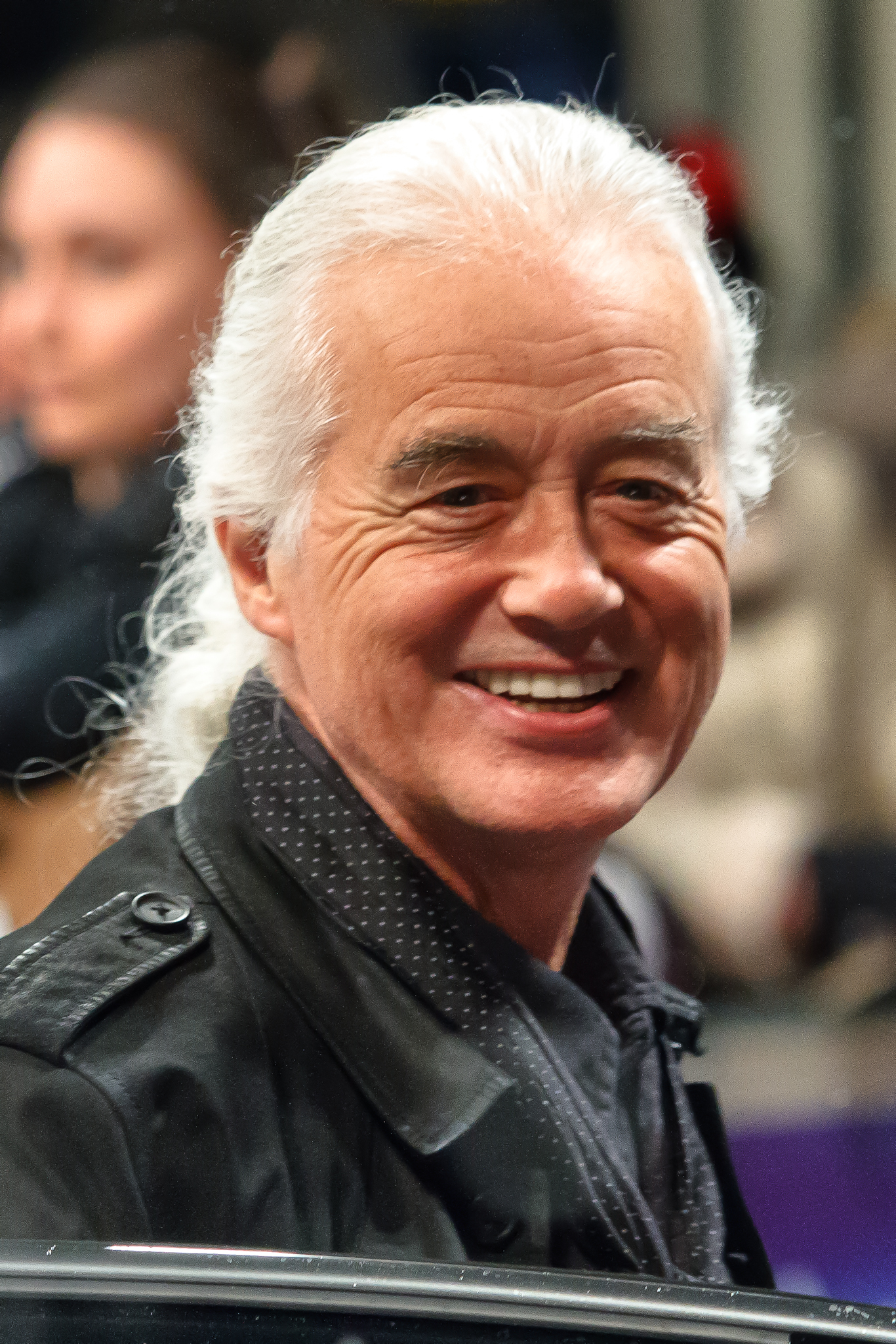
9. **A Shadow Over Stardom: Health Battles and Personal Reckonings**The mid-1980s ushered in an era of profound personal and professional challenges for Burt Reynolds, casting a long shadow over his once-bright stardom. Following the commercial disappointment of *Stroker Ace*, he starred in Blake Edwards’ *The Man Who Loved Women* (1983), an English remake of a French film, which also failed to resonate with audiences. Even a sequel to his earlier hit, *Cannonball Run II* (1984), directed by Needham, brought in only half the original’s earnings, underscoring a noticeable decline in his box-office appeal. It was during this time that he mused, “Getting to the top has turned out to be a hell of a lot more fun than staying there. I’ve got Tom Selleck crawling up my back. I’m in my late 40s. I realize I have four or five more years where I can play certain kinds of parts and get away with it.”
However, it was during the filming of *City Heat* (1984), where he was teamed with Clint Eastwood, that a devastating injury irrevocably altered his life. Reynolds was severely hit in the jaw with a real chair instead of a breakaway prop, causing excruciating chronic pain. This injury led to significant weight loss, which, combined with his visibly altered appearance, fueled rampant and cruel rumors for years that he was suffering from AIDS. The physical and emotional toll of this period was immense, as he battled both a debilitating injury and a relentless public whisper campaign.
His attempts to regain his footing professionally were often met with further setbacks. Reynolds returned to directing with *Stick* (1985), an adaptation of an Elmore Leonard novel, but it was both a critical and commercial failure. This pattern continued with a string of other action movies: *Heat* (1986), based on a William Goldman novel; *Malone* (1987); and *Rent-a-Cop* (1987) with Liza Minnelli. Reynolds later revealed the deeply personal motivation behind taking on these roles, stating, “I did Heat and Malone ‘because there were so many rumors about me [having AIDS]. I had to get out and be seen.'” His choices during this challenging time were often dictated by a desperate need to dispel the harmful whispers about his health.
Despite the cinematic struggles, Reynolds found a surprising avenue for success by teaming with Bert Convy to co-produce the game show *Win, Lose or Draw* in 1987. Based on a game he played with friends, the show found popularity, with Vicki Lawrence hosting the daytime version and Convy the syndicated version. Yet, his film career remained turbulent, with *Switching Channels* (1988) bombing, *Physical Evidence* (1989) being poorly received, and even *Breaking In* (1989), despite excellent reviews for Reynolds, failing commercially. The animated film *All Dogs Go to Heaven* (1989), where he voiced Charlie B. Barkin, was a rare success. He candidly reflected on this period: “When I was doing very well, I wasn’t conscious I was doing very well, but I became very conscious when I wasn’t doing very well. The atmosphere changed.”

10. **The Small Screen Revival: Embracing Television and the Character Actor Role**As the 1980s drew to a close, Burt Reynolds strategically pivoted back to television, a medium where he had found early success. This return signaled a pragmatic recognition of shifting industry landscapes and offered him new opportunities to reconnect with audiences. His comeback began with the detective series *B.L. Stryker* (1989–90), which ran for two seasons, allowing him to regain a consistent presence on screen.
The real triumph, however, came with the situation comedy *Evening Shade* (1990–94), where Reynolds starred as Woodward “Wood” Newton, a former Pittsburgh Steelers player. This series proved to be a considerable success, accumulating 98 episodes over four seasons and earning him a Primetime Emmy Award for Outstanding Lead Actor in a Comedy Series. The role not only revitalized his career but also endeared him to a new generation of viewers, and he humorously credited it for his membership in “Steeler Nation.”
During his tenure on *Evening Shade*, Reynolds also took on other projects, demonstrating his continued versatility. He made a memorable cameo in Robert Altman’s *The Player* (1992), famously playing himself and playfully complaining about Hollywood. He also starred in the crime film *Cop and a Half* (1993) and directed himself in the television movie *The Man from Left Field* (1993), co-featuring Reba McEntire. These roles showcased his enduring charm and willingness to engage with diverse material across different platforms.
After *Evening Shade* concluded in 1994, Reynolds transitioned more definitively into the role of a character actor, a natural evolution for a seasoned performer. While he still took leads, such as in the horror movie *The Maddening* (1995), he increasingly embraced major supporting roles. Notable among these were appearances in *Citizen Ruth* (1996), an early work from director Alexander Payne, and the high-profile *Striptease* (1996) alongside Demi Moore. The audition for *Striptease* was particularly humbling for Reynolds, as he had to perform the challenging act of removing his toupee in front of producers, demonstrating his commitment to the craft despite his legendary status.
Reflecting on this phase, Reynolds insightfully stated, “I knew I could play him. I could make him likable and dangerous. There are very few people who can do that. I always played likable and dangerous. I had a persona. Unfortunately, my persona became bigger than my acting.” He accepted a significantly lower salary of $350,000 for *Striptease*, a stark contrast to his peak earnings, yet his performance garnered strong reviews, and the film found box-office success despite critical panning. This period also saw him grappling with financial depletion, having reportedly spent $13 million, and a noticeable shift in Hollywood’s perception. As his agent noted in 1996, “there’s a split between the executives in town who are under 40 and those who are over 40. The younger executives are more open to Burt because they grew up loving Deliverance. But the older executives remember how crazy he was, and they are less receptive.” Reynolds navigated these changing currents with a blend of resilience and self-awareness.
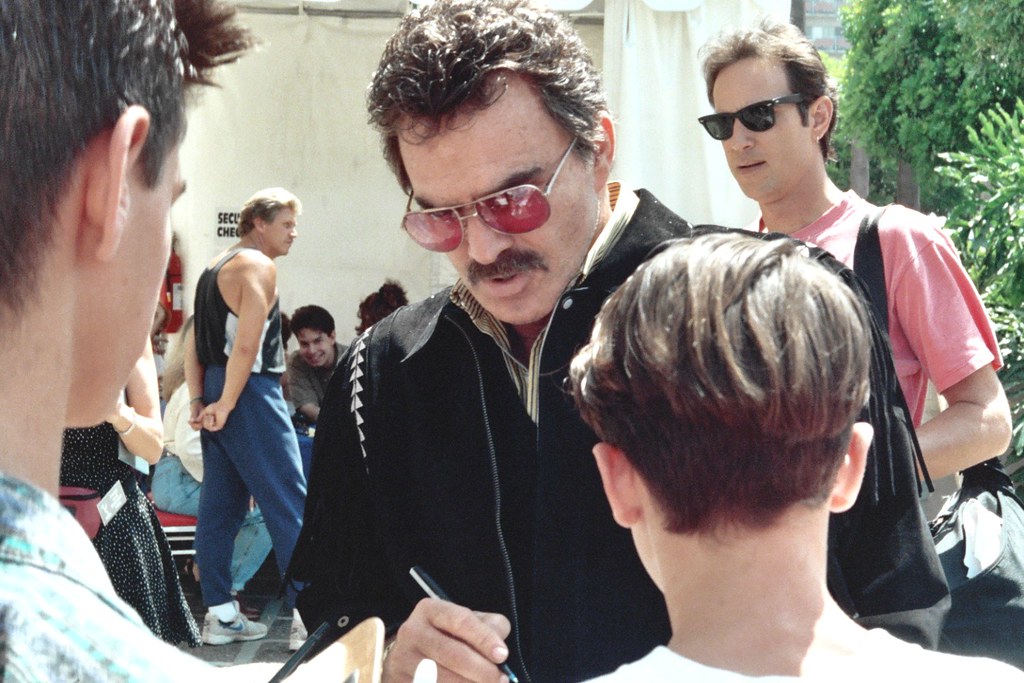
11. **A Resurgent Artistry: The *Boogie Nights* Triumph and Late-Career Re-evaluation**The late 1990s brought about an unexpected and profound career resurgence for Burt Reynolds, spearheaded by his acclaimed performance in Paul Thomas Anderson’s *Boogie Nights* (1997). In a role that surprised many, Reynolds portrayed Jack Horner, a high-minded porn film director, a part that was widely considered a significant comeback. His nuanced and compelling portrayal earned him a remarkable 12 acting awards and three major nominations, including his first and only Academy Award nomination for Best Supporting Actor, as well as a Golden Globe Award for Best Supporting Actor – Motion Picture and a BAFTA Award nomination.
Despite the widespread critical acclaim and the personal recognition, Reynolds’ experience working on *Boogie Nights* was famously complex and fraught with tension. He reportedly disliked the production and, particularly, did not get along with the young writer-director Paul Thomas Anderson. This friction even led him to dismiss his agent for recommending the role. Co-star William H. Macy later observed that Reynolds was somewhat “clueless about the film” and, due to his age, had become “out of touch with the film industry,” suggesting a generational and stylistic divide that made the collaboration challenging.
Years later, Reynolds offered a more nuanced perspective on the film, clarifying in 2012 that he did not hate *Boogie Nights* itself, calling it “extraordinary.” He stated that his opinion of the film was entirely separate from his relationship with Anderson. In a 2015 *GQ* interview, he attributed their difficulties to a clash of personalities, noting Anderson “was young and full of himself.” Reynolds recounted an anecdote from filming the first shot, where Anderson expressed awe, only for Reynolds to name five other films with similar shots, highlighting a disconnect in their creative sensibilities. He added, “It wasn’t original. But if you have to steal, steal from the best.”
Despite the *Boogie Nights* triumph and the renewed critical appreciation for his acting talent, Reynolds found that the Oscar nomination did not fully reinstate him to the “A-list.” While work was plentiful in the subsequent years, prestige projects remained elusive, and he often found himself in lead roles in smaller films like *Big City Blues* (1997) or supporting parts in straight-to-video features such as *Universal Soldier II: Brothers in Arms* (1998) and *Universal Soldier III: Unfinished Business* (1998). He also continued to direct, notably with the action TV movie *Hard Time* (1998), which spawned two sequels he did not direct, and *The Last Producer* (2000).
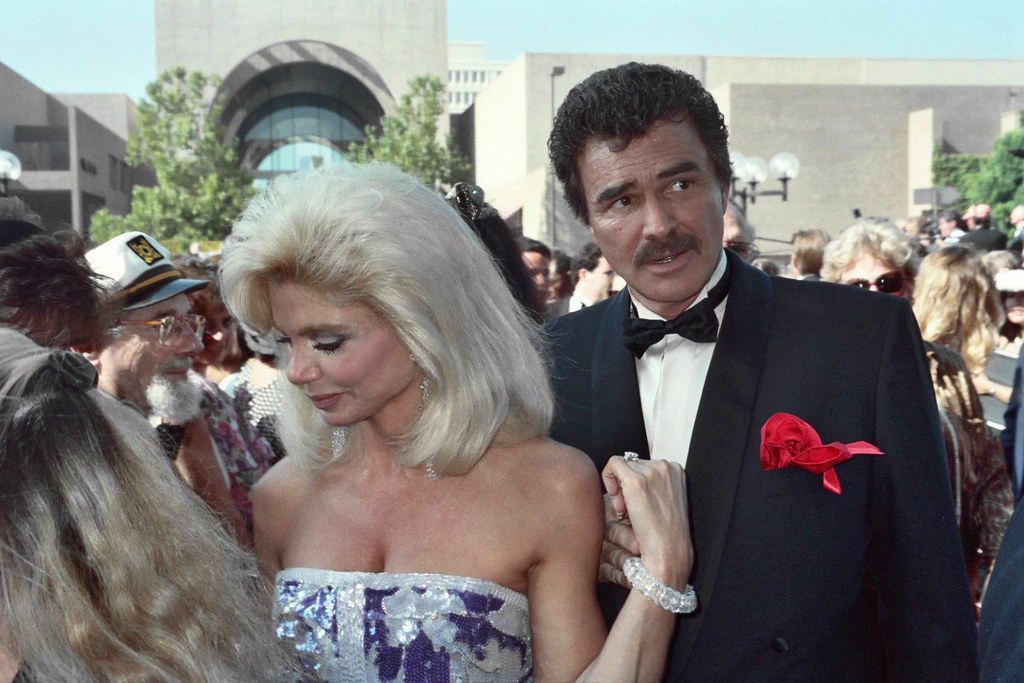
12. **The Enduring Legacy and the Unresolved Silence**In the final decades of his life, Burt Reynolds continued to work prolifically, navigating a career landscape that had shifted dramatically since his heyday as a box-office king. He appeared in supporting roles in films like Renny Harlin’s *Driven* (2001) alongside Sylvester Stallone, *Tempted* (2001), and Mike Figgis’ *Hotel* (2001). His distinctive voice found new avenues, notably as Avery Carrington in the hugely popular video game *Grand Theft Auto: Vice City* (2002), and later as himself in *Saints Row: The Third* (2011) and the animated series *Archer*, showcasing his adaptability to emerging forms of entertainment.
Reynolds embraced a series of roles that often playfully referenced his earlier, iconic performances. This self-awareness was evident in films such as *Without a Paddle* (2004), a comedic riff on his *Deliverance* persona, and the 2005 remake of *The Longest Yard*, where he took on the Michael Conrad part while Adam Sandler stepped into Reynolds’ original role. His appearance as Boss Hogg in *The Dukes of Hazzard* (2005) further cemented his connection to the car-chase genre that had defined much of his commercial success in the 1970s.
Throughout the 2000s, Reynolds maintained a steady presence in Hollywood, taking on both lead roles in independent features like *Cloud 9* (2006), *Forget About It* (2006), *Deal* (2008), and *A Bunch of Amateurs* (2008), as well as supporting parts in films such as *End Game* (2006), *Grilled* (2006), and *In the Name of the King* (2007). He also made a memorable guest appearance in an episode of *Burn Notice* in 2010, demonstrating his enduring appeal across different mediums.
Burt Reynolds passed away on September 6, 2018. The article’s central enigma, “Why Burt Reynolds Wasn’t Buried for More Than Two Years,” remains a poignant and fitting postscript to a life lived so publicly, often on his own terms. His journey—from a promising athlete to a Hollywood legend, through immense fame, devastating personal setbacks, and remarkable comebacks—was a testament to resilience and an undeniable, magnetic charisma. The delayed arrangements for his final resting place, even in their eventual resolution, only amplify the enduring mystique of a man who, even in absence, continued to captivate public interest, leaving behind a complex and multifaceted legacy that transcends the silver screen.
Read more about: The Unending Debate: Why The Sopranos Finale Continues to Captivate and Challenge Viewers
From the football fields of Florida to the glittering heights of Hollywood, and through the inevitable valleys of a long and challenging career, Burt Reynolds remained an icon of American entertainment. His life was a compelling narrative of ambition, vulnerability, and an unshakeable connection with his audience, ensuring that his story, much like the man himself, would continue to inspire fascination and discussion for years to come.



